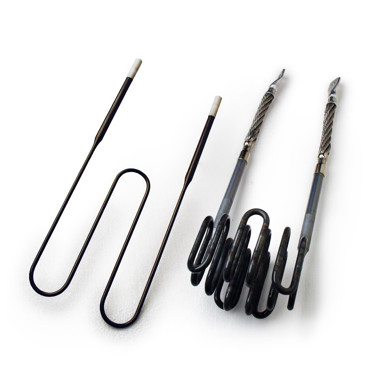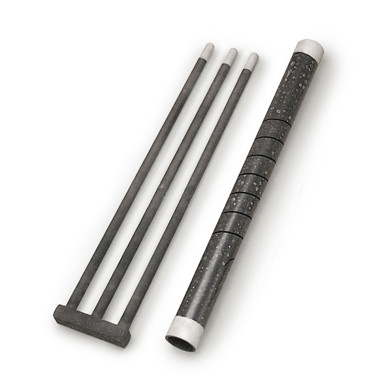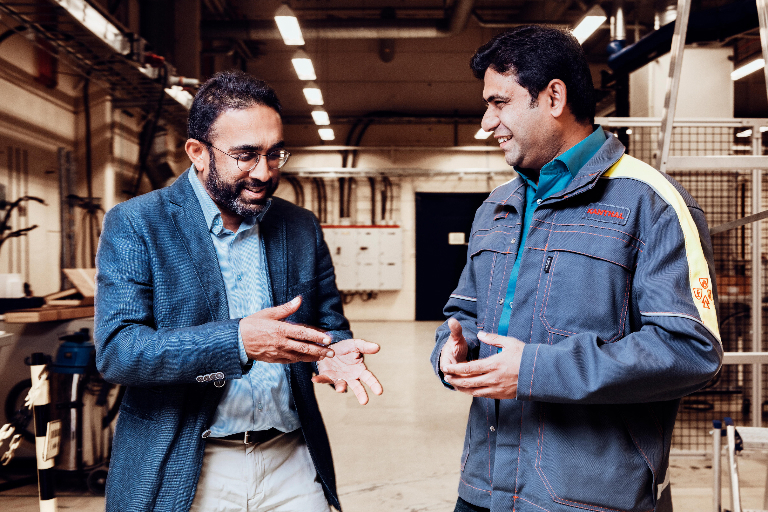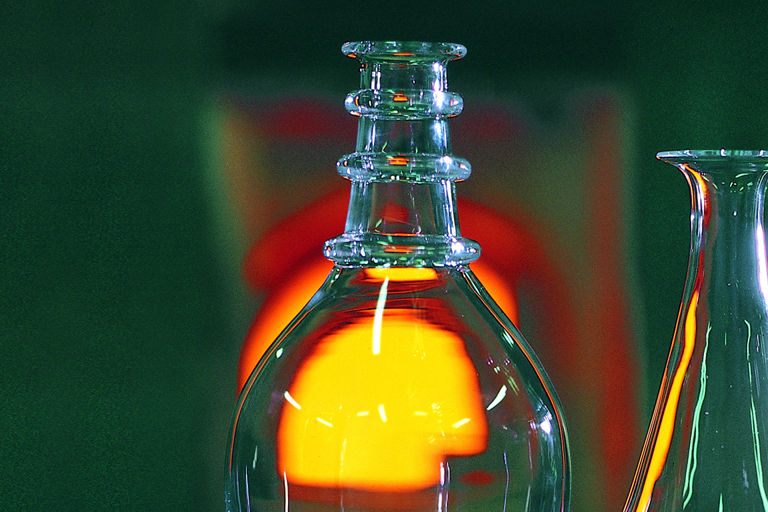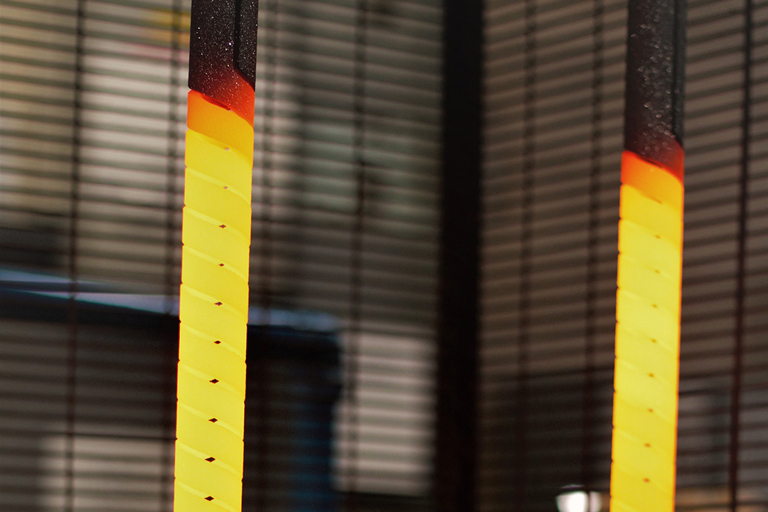 Takashi Yamashita, Technical Engineer, Kanthal.The fusion – or overflow – process involves pouring molten glass into a refractory trough and letting it overflow down both sides. The two flows then fuse together at the base of the trough before flowing down to form a thin layer of glass. Because the glass fuses together in mid-air, with zero contact with any objects or surfaces, the process is able to achieve an exceptionally smooth and pristine surface on both sides. It can be used to produce glass thickness from two millimeters down to 100 microns.
Takashi Yamashita, Technical Engineer, Kanthal.The fusion – or overflow – process involves pouring molten glass into a refractory trough and letting it overflow down both sides. The two flows then fuse together at the base of the trough before flowing down to form a thin layer of glass. Because the glass fuses together in mid-air, with zero contact with any objects or surfaces, the process is able to achieve an exceptionally smooth and pristine surface on both sides. It can be used to produce glass thickness from two millimeters down to 100 microns.
Between the melting furnace and the refractory trough, the molten glass passes through a forehearth furnace. “Temperature uniformity on these furnaces is critical for the quality of the finished product,” says Takashi Yamashita, Technical Engineer, Kanthal. “Despite the high temperatures – typically around 1,200-1,500°C (2,200-2,700°F) – it needs to be well controlled and evenly distributed across the molten glass, so that it flows and fuses together for a smooth finish.”
The fusion process in brief
The fusion process (also known as the overflow process) involves pouring molten glass into a refractory trough and letting it overflow down both sides. The two flows then fuse together at the base of the trough before flowing down to form a thin layer of glass. Because the glass fuses together in mid-air, with zero contact with any objects or surfaces, it has an exceptionally smooth and pristine surface on both sides.
High power, high resistance
To keep up with strong global demand for display glass, manufacturers typically operate around the clock. Any downtime comes at a huge cost, so using long-life components is critical to their operations. When it comes to the forehearth furnaces, one of the biggest challenges to productivity is alkaline vapor, which can cause the heating elements to degrade.
Kanthal® Super molybdenum disilicide (MoSi2) heating elements and Globar® silicon carbide (SiC) heating elements can both deliver the high power required by manufacturers, as well as excellent temperature uniformity. Kanthal® Super in particular can be customized with a thicker 12 mm rod for even higher power output and deliver temperatures of up to 1,850°C (3,360°F). Due to its high-density structure, Globar® SG is more resistant to alkaline vapor compared with similarly sized elements.
We can adapt our heating elements to deliver even higher power and longer life depending on the furnace conditions.
“Because of our wide experience in this field, we can adapt our heating elements to deliver even higher power and longer life depending on the furnace conditions,” says Yamashita. “Our high-density elements have proven they can last longer in the harsh conditions found in the fusion process. In some cases, we have seen them last twice as long as conventional elements.”
Four benefits of Kanthal® Super heating elements and Globar® SiC heating elements in fusion processes
- Excellent temperature uniformity: Electric heating delivers a precise and even distribution of heat across the molten glass, to ensure a high-quality finish to the final product.
- High power: Kanthal’s elements can deliver the required power needed and even be customized with thicker rods for high temperatures.
- Durable: Globar® SiC heating elements are made with high-density material, making them more resistant to alkaline vapor and more resilient to the harsh conditions inside furnaces.
- Extensive experience and support: Kanthal has decades of experience working with electric heating in industrial processes. Its experts can offer technical assistance and customizations to deliver the optimal heating process.
相关产品
Kanthal产品和服务系列
Read more
近期文章
